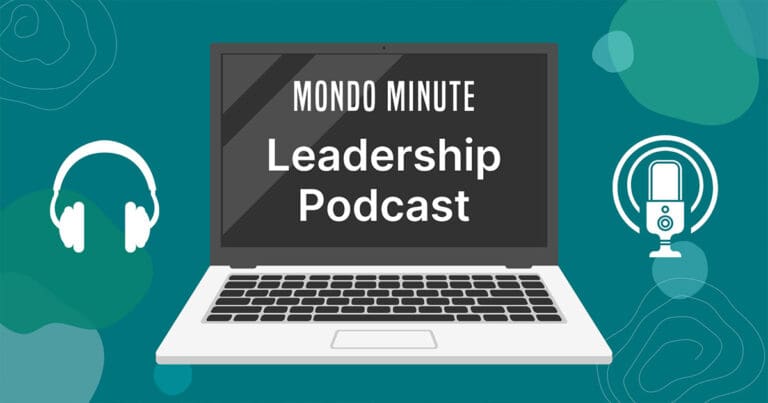Burnout vs. Stress: How to Identify & Prevent Both

In the whirlwind of daily chores, personal commitments, and professional obligations, the modern individual often finds themselves caught in a relentless tide of demands.
The high expectations, both self-imposed and from external sources, can leave even the most resilient individuals feeling drained and overwhelmed.
But is this a mere consequence of stress or a deeper issue like burnout?
To advocate for our own well-being, it’s crucial to delineate the differences between burnout and stress in both personal and professional realms and to learn how to identify and mitigate them.
How to identify & prevent burnout vs. stress:
- Burnout definition
- Stress definition
- Causes of burnout vs. stress
- Identifying the signs of burnout vs. stress
- Prevention and management strategies for stress
- Prevention and management strategies for burnout
Burnout definition
Burnout is characterized by a state of chronic physical and emotional exhaustion, often coupled with feelings of cynicism and detachment from personal and professional engagements. Unlike prolonged stress, burnout leads to a notable decline in performance and a lack of motivation, indicating a significant departure from merely feeling stressed.
Stress definition
Stress, whether in personal or professional settings, is defined as the response individuals may have when faced with demands and pressures that challenge their ability to cope. Short-term stress can act as a motivating force leading to improved performance, while long-term or chronic stress can give rise to health issues and decreased productivity over time.
Causes of burnout vs. stress:
There are a number of notable causes of burnout vs. stress like high workloads, interpersonal conflicts, life imbalance, and unrealistic expectations.
Causes of stress
- High workload: Feeling overwhelmed and anxious when faced with an unmanageable load of responsibilities.
- Lack of control: Experiencing a lack of autonomy or control in one’s personal or professional endeavors can lead to feelings of helplessness and frustration.
- Tight deadlines: Deadlines, whether personal or professional, can be a major source of stress, especially when resources or time are scarce.
- Interpersonal conflicts: Difficult relationships with family, friends, or coworkers can cause immense stress.
- Personal life challenges: Challenges such as financial concerns, health issues, or family problems can exacerbate stress levels.
Causes of burnout
- Chronic stress: When stress becomes long-term and goes unaddressed, it can often morph into burnout.
- Lack of recognition: Feeling that one’s efforts, either at home or at work, are not appreciated or valued can lead to feelings of cynicism and detachment.
- Lack of satisfaction: Feeling unfulfilled or disengaged in one’s personal or professional life can contribute to burnout.
- Life imbalance: When an individual feels like they have no time for anything beyond their obligations, it can lead to burnout and exhaustion.
- Unrealistic expectations: Constantly being expected to exceed one’s capabilities can lead to feelings of inadequacy and, eventually, burnout.
Identifying the signs of burnout vs. stress
There are several signs of burnout vs. stress to look out for in yourself and others like fatigue, irritability, anxiety, chronic exhaustion, and feelings of ineffectiveness.
Signs of stress
- Fatigue
- Headaches
- Irritability
- Anxiety
- Minor depressive episodes
Signs of burnout
- Chronic exhaustion
- Cynicism
- Detachment
- Feelings of ineffectiveness
Prevention and management strategies for stress
Prevention and management strategies for stress include utilizing time management techniques, leveraging flexible work arrangements, and prioritizing self-care.
Time management techniques
Effective time management techniques can play a pivotal role in preventing and managing stress by organizing tasks and reducing feelings of being overwhelmed.
By setting priorities, breaking down larger tasks into manageable chunks, and planning ahead, individuals can reduce their workload stress, foster a sense of control, and enhance productivity.
Leverage flexible work arrangements
In today’s world, flexible work arrangements are increasingly being adopted to promote a healthy work-life balance.
By negotiating telecommuting options or flex-time schedules, individuals can reduce the stress of commuting and have more time for personal commitments.
Prioritize self-care
Engaging in activities such as exercise, meditation, or hobbies can help to reduce stress levels and promote well-being.
By taking care of one’s physical and mental health, individuals can build resilience and better cope with stressors.
Prevention and management strategies for burnout
Prevention and management strategies for burnout include
Regular check-ins
Regular check-ins, both personal and with supervisors or colleagues, are crucial in monitoring one’s emotional and mental well-being.
These discussions can help identify early signs of burnout and provide an opportunity to address any issues or concerns promptly.
Set clear boundaries
Setting clear boundaries, both personally and professionally, is essential to prevent burnout.
In a professional context, this could mean managing workload and saying no when necessary, while on a personal level, it could involve designating time for rest and recreation, ensuring a healthy balance between work and personal life.
Seek support
Seeking support from loved ones or mental health professionals can be critical in managing stress levels and preventing burnout.
Talking about concerns and seeking guidance can provide individuals with a sense of belonging and help reduce feelings of isolation and hopelessness.
Recognizing burnout vs. stress
While stress and burnout are often used interchangeably, it’s essential to recognize the differences between them and take proactive steps to prevent or manage them.
Understanding the causes, identifying the signs, and utilizing effective strategies allows us to advocate for our own well-being and cultivate a healthier, more balanced approach to life.
By taking care of ourselves, we can become more resilient individuals who are better equipped to handle the challenges that come our way.
Looking to hire top-tier Tech, Digital Marketing, or Creative Talent? We can help.
Every year, Mondo helps to fill over 2,000 open positions nationwide.
More articles about job searching and industry trends:
- 12 Tips to Leverage the “September Surge” to Get a Job
- 10 Steps to Find Gig Work in the Gig Economy
- Top AI Skills Employers Are Looking For in Job Seekers
- 8 Highest Paid Digital Media Jobs That Can Be Remote
- What Does a Recruiter Do & Who Do They Work For?
- Gen Z & Millennial Layoffs: 11 Tips to Find a New Job After Being Fired
- Will ChatGPT Replace Your Job?
- What to Do If You Find Out Your Coworker Makes More Money Than You
- How to Best Explain Having a ‘Gap’ on Your Resume
- Cliche Interview Answers to Avoid & What to Say Instead
- Best Questions to Ask to Impress Hiring Managers



